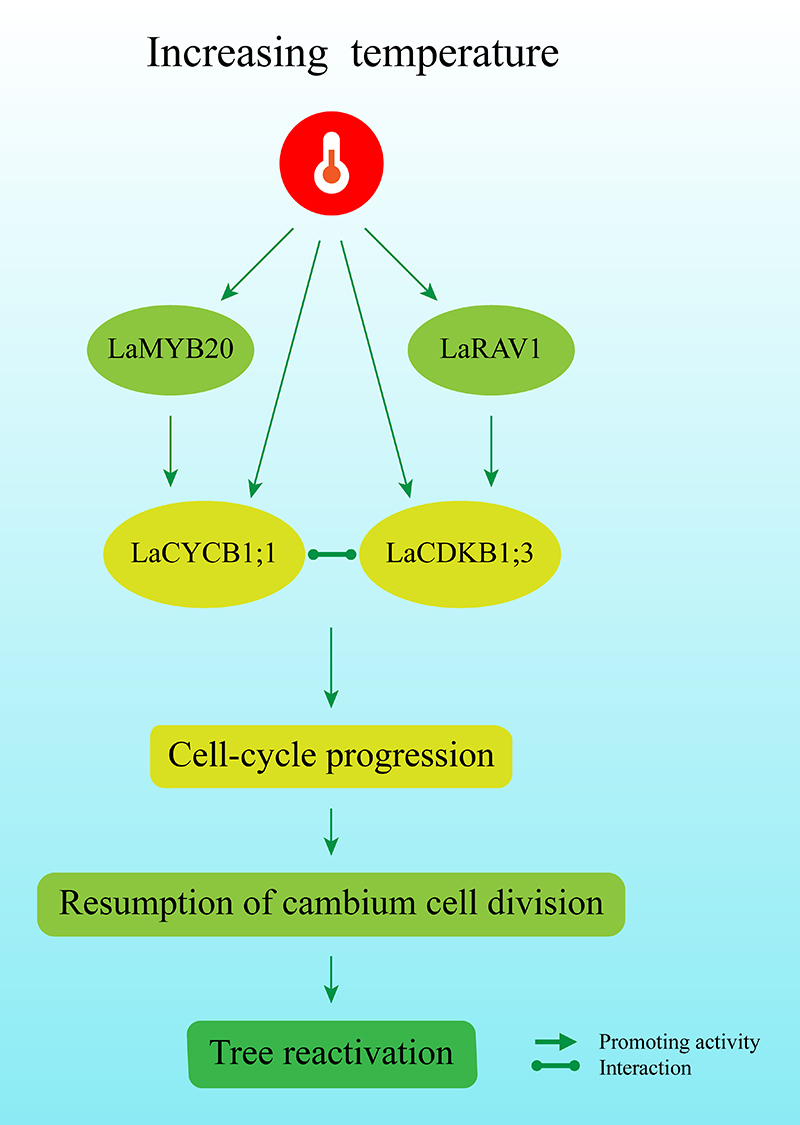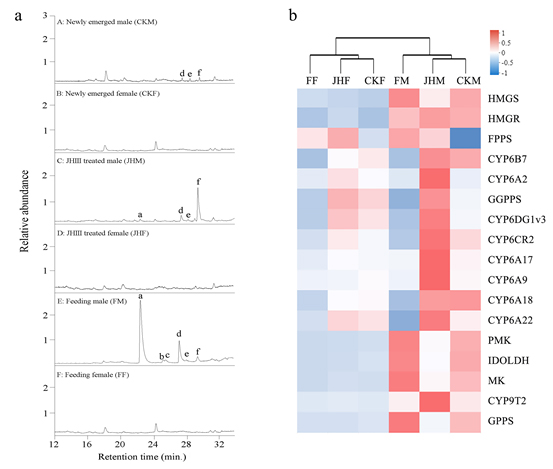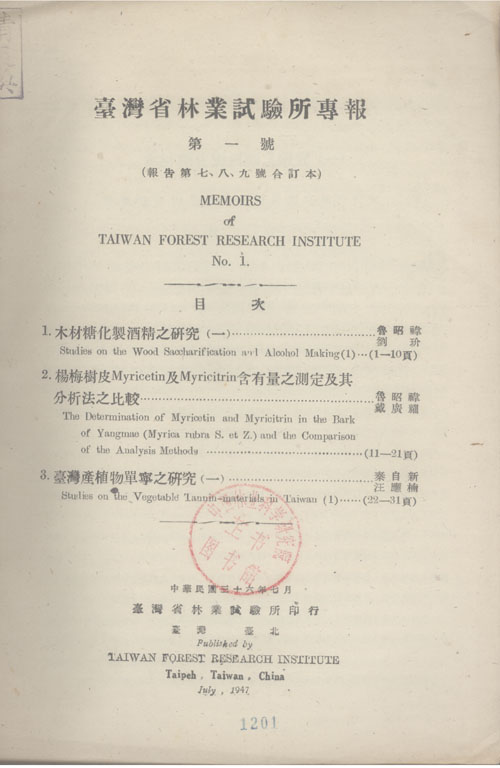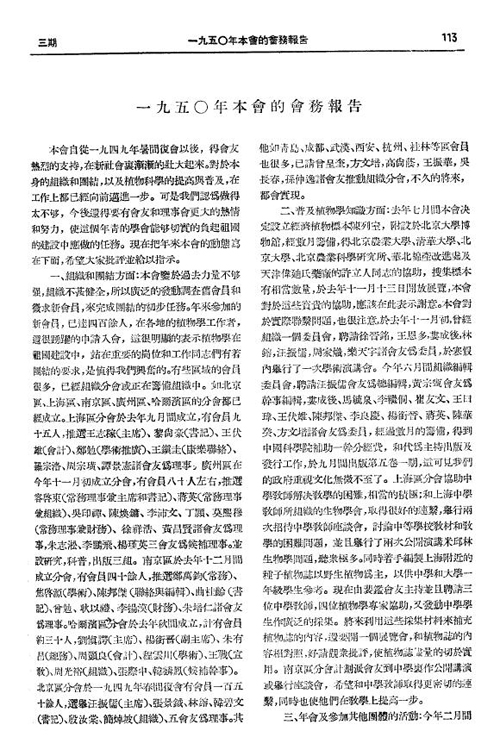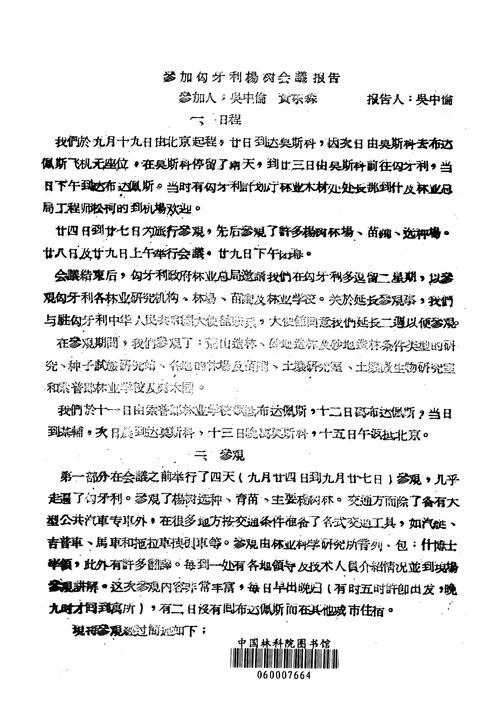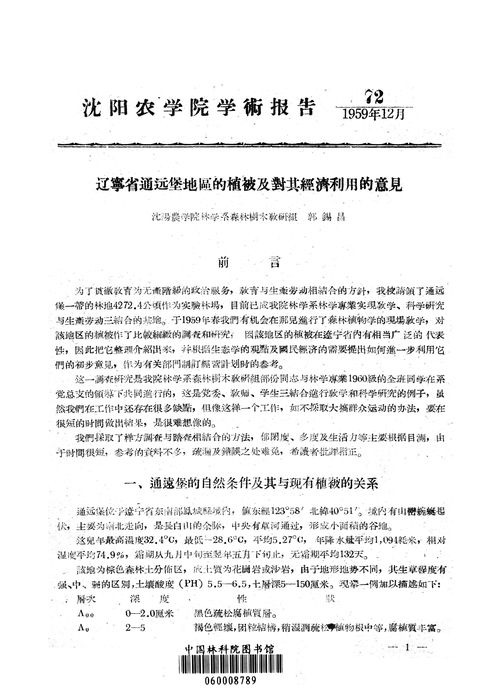
木本植物树皮研究进展
编号
lyqk009522


中文标题
木本植物树皮研究进展


作者单位
1. 中国林业科学研究院森林生态环境与保护研究所,北京 100091;
2. 中国林业科学研究院林业研究所,北京 100091;
3. 林木遗传育种国家重点实验室,北京 100091


期刊名称
世界林业研究


年份
2021


卷号
34


期号
4


栏目名称
专题论述


中文摘要
树皮是指木本植物维管形成层以外的所有组织。树皮作为木本植物的一部分,其结构一般比木质部更加复杂。目前,对木本植物树皮的研究已取得了一定的成果。文中在简述木本植物树皮形态结构的基础上,阐述了树皮的理化性质及其防护功能,以及树皮厚度模型及其应用;通过介绍树皮的理化性质,分析了树皮的生理生态功能研究进展;重点概述了不同木本植物树皮中基因表达调控机制;剖析了树皮研究过程中存在的问题,并展望了今后的研究重点,以期为进一步了解树皮的多功能性提供参考,同时为将来的树皮生态学研究提供借鉴。


基金项目
国家自然基金青年项目“红皮云杉谱系地理学及其第四纪冰期避难所研究”(31500540)


英文标题
Research Progress in Bark of Woody Plants


作者英文名
Nie Wen, Jiang Zeping, Liu Yifu, Wang Junhui, Wang Ya, Jia Zirui


单位英文名
1. Research Institute of Forest Ecology, Environment and Protection, Chinese Academy of Forestry, Beijing 100091, China;
2. Research Institute of Forestry, Chinese Academy of Forestry, Beijing 100091, China;
3. State Key Laboratory of Tree Genetics and Breeding, Beijing 100091, China


英文摘要
Bark refers to all tissues of woody plants other than the vascular cambium. As a part of woody plants, bark has generally more complex structure than xylem does. At present, the research on the bark of woody plants has achieved certain results. The paper describes the morphological structure of the woody plant bark, elaborates its physical and chemical properties and the protective functions, and discusses the bark thickness model and its application. Based on the introduction of bark’s physical and chemical properties, the research progress in bark’s physiological and ecological functions is analyzed, in which gene expression regulation mechanisms in the bark of different woody plants are highlighted. The paper also analyzes the problems in the bark research, and prospects the focus of future research. It is hoped to provide references for further understanding of the versatility of bark, and at the same time provide references for future bark ecology research.


英文关键词
woody plant;bark;physical and chemical property;thickness;ecology;gene expression


起始页码
14


截止页码
19


投稿时间
2020/11/21


最后修改时间
2021/3/24


作者简介
聂稳,男,硕士研究生,研究方向为树木生理生态,E-mail:wenniecaf@163.com


通讯作者介绍
贾子瑞,女,博士,助理研究员,主要从事云杉遗传改良研究,E-mail:jiazirui646@163.com


E-mail
wenniecaf@163.com;jiazirui646@163.com


分类号
S718.4


DOI
10.13348/j.cnki.sjlyyj.2021.0015.y


参考文献
[1] EVERT R F. Esau's plant anatomy: meristems, cells, and tissues of the plant body: their structure, function, and development[M].3rd ed.Hoboken, New Jersey: John Wiley & Sons, 2006.
[2] PFAUTSCH S, H?LTT? T, MENCUCCINI M. Hydraulic functioning of tree stems: fusing ray anatomy, radial transfer and capacitance[J]. Tree Physiology, 2015, 35(7):706-722.
[3] 赵泾峰, 宋孝周, 冯德君. 栓皮栎软木研究进展[J]. 西北农林科技大学学报(自然科学版),2019,47(4):25-31.
[4] 秦世立, 马冬梅. 树皮形态与解剖构造的研究[J]. 辽宁林业科技,2002(4):11-13.
[5] 赵杰军, 陈晓鸣, 王自力, 等. 白蜡虫七种寄主植物枝条树皮比较解剖研究[J]. 广西植物,2012,32(1):40-45.
[6] 石江涛, 刘海冲, 彭俊懿, 等. 构树次生韧皮部细胞组成与形态的季节性变化[J]. 西北林学院学报,2019,34(5):202-207.
[7] ROSELL J A. Bark in woody plants: understanding the diversity of a multifunctional structure[J]. Integrative and Comparative Biology, 2019, 59(3):535-547.
[8] ROSELL J A, OLSON M E. The evolution of bark mechanics and storage across habitats in a clade of tropical trees[J]. Botanical Society of America, 2014, 101(5):764-777.
[9] ROSELL J A, CASTORENA M, LAWS C, et al. Bark ecology of twigs vs main stems: functional traits across 85 species of angiosperms[J]. Oecologia, 2015, 178(4):1033-1043.
[10] MICHALETZ S T, JOHNSON E A, TYREE M T. Moving beyond the cambium necrosis hypothesis of post-fire tree mortality: cavitation and deformation of xylem in forest fires[J]. New Phytologist, 2012, 194(1):254-263.
[11] B?R A, NARDINI A, MAYR S. Post-fire effects in xylem hydraulics of Picea abies, Pinus sylvestris and Fagus sylvatica[J]. New Phytologist, 2018, 217(4):1484-1493.
[12] SHEPPARD J P, MORHART C, SPIECKER H. Bark surface temperature measurements on wild cherry (Prunus avium) grown within an agroforestry system[J]. Silva Fennica, 2016, 50(3):1313. DOI:10.14214/sf.1313
[13] ILEK A, KUCZA J, MORKISZ K. Hydrological properties of bark of selected forest tree species: part 2: interspecific variability of bark water storage capacity[J]. Folia Forestalia Polonica, 2017, 59(2):110-122.
[14] ANNA I, KUCZA J. Hydrological properties of bark of selected forest tree species: part I: the coefficient of development of the interception surface of bark[J]. Trees, 2014, 28(3):831-839.
[15] SEKI K, ORIHASHI K, SAITO N, et al. Relationship between the composition and distribution of nutritional substances, secondary metabolites, and internal secretory structures in the bark tissues of Larix gmelinii var. japonica, L. kaempferi, and their F1 hybrid and susceptibility to vole herbivory[J]. Journal of Forest Research, 2019, 24(5):292-302.
[16] 梅闯, 闫鹏, 艾沙江·买买提, 等. 新疆野苹果(Malus sieversii)受苹小吉丁虫危害程度与树皮厚度、径阶的关系[J]. 中国农业科技导报,2016,18(4):24-30.
[17] 苓建强. 白蜡属不同树种对花曲柳窄吉丁的抗性机制[D]. 北京: 北京林业大学, 2011.
[18] 李淑玲, 刘美青, 李继东, 等. 毛白杨无性系树皮有机物质含量与抗性关系的研究[J]. 河南农业大学学报,2001(3):216-220.
[19] 妥彬. 浙东森林木本植物树皮性状及其功能策略[D]. 上海: 华东师范大学, 2019.
[20] PFANZ H. Bark photosynthesis[J]. Trees, 2008, 22(2):137-138.
[21] TESKEY R O, SAVEYN A, STEPPE K, et al. Origin, fate and significance of CO2 in tree stems[J]. New Phytologist, 2008, 177(1):17-32.
[22] CERNUSAK L A, HUTLEY L B. Stable isotopes reveal the contribution of corticular photosynthesis to growth in branches of Eucalyptus miniata[J]. Plant Physiology, 2011, 155(1):515-523.
[23] WITTMANN C, PFANZ H. More than just CO2-recycling: corticular photosynthesis as a mechanism to reduce the risk of an energy crisis induced by low oxygen[J]. New Phytologist, 2018, 219(2):551-564.
[24] CERNUSAK L A, CHEESMAN A W. The benefits of recycling: how photosynthetic bark can increase drought tolerance[J]. New Phytologist, 2015, 208(4):995-997.
[25] VANDEGEHUCHTE M W, BLOEMEN J, VERGEYNST L L, et al. Woody tissue photosynthesis in trees: salve on the wounds of drought?[J]. New Phytologist, 2015, 208(4):998-1002.
[26] ZHANG H, WANG C, WANG X. Spatial variations in non-structural carbohydrates in stems of twelve temperate tree species[J]. Trees, 2014, 28(1):77-89.
[27] ANDEREGG W R L, CALLAWAY E S. Infestation and hydraulic consequences of induced carbon starvation[J]. Plant Physiology, 2012, 159(4):1866-1874.
[28] YANG Q, ZHANG W, LI R, et al. Different responses of non-structural carbohydrates in aboveground tissues/organs and root to extreme drought and re-watering in Chinese fir (Cunninghamia lanceolata) saplings[J]. Trees, 2016, 30(5):1863-1871.
[29] NARDINI A, GULLO M A L, SALLEO S. Refilling embolized xylem conduits: is it a matter of phloem unloading?[J]. Plant Science, 2011, 180(4):604-611.
[30] 暴家兵, 齐果萍, 刘晋仙, 等. 华北落叶松树皮表面细菌群落多样性及其分布格局[J]. 微生物学报,2020,60(1):135-147.
[31] 卢世香. 树皮结构和HblMYC1基因与橡胶树产量相关性研究[D]. 海口: 海南大学, 2010.
[32] 郭秀丽. 橡胶树HbGRX基因的克隆及其在死皮病发生过程中的功能分析[D]. 海口: 海南大学, 2017.
[33] ARNERUP J, LIND M, OLSON ?, et al. The pathogenic white-rot fungus Heterobasidion parviporum triggers non-specific defence responses in the bark of Norway spruce[J]. Tree Physiology, 2011, 31(11):1262-1272.
[34] RAINS M K, SILVA N D G D, MOLINA I. Reconstructing the suberin pathway in poplar by chemical and transcriptomic analysis of bark tissues[J]. Tree Physiology, 2018, 38(3):340-361.
[35] 王晓林, 蔡可旺, 姜立春. 落叶松树皮厚度变化规律的研究[J]. 森林工程,2011,27(2):8-11.
[36] 贾炜玮, 梁玉钊, 李凤日. 落叶松人工林树皮厚度预测模型[J]. 南京林业大学学报(自然科学版),2019,43(6):97-104.
[37] 严铭海, 方静仪, 李睿宇, 等. 福州市湿地松人工林树皮厚度模型研究[J]. 西南林业大学学报(自然科学),2018,38(5):124-131.
[38] 唐诚, 王春胜, 庞圣江, 等. 西南桦人工林树皮厚度模型模拟[J]. 林业科学,2017,53(7):85-93.
[39] LAASASENAHO J, MELKAS T, ALDEN S. Modelling bark thickness of Picea abies with taper curves[J]. Forest Ecology and Management, 2005, 206(1/2/3):35-47.
[40] WILLIAMS V L, WITKOWSKI E T F, BALKWILL K. Relationship between bark thickness and diameter at breast height for six tree species used medicinally in South Africa[J]. South African Journal of Botany, 2007, 73(3):449-465.
[41] BROOKS J R, JIANG L. Comparison of prediction equations for estimating inside bark diameters for yellow-poplar, red maple, and red pine in West Virginia[J]. Northern Journal of Applied Forestry, 2009, 26(1):5-8.
[42] MAGUIRE D A, HANN D W. Bark thickness and bark volume in southwestern Oregon Douglas-fir[J]. Western Journal of Applied Forestry, 1990, 5(1):5-8.
[43] LI R, WEISKITTEL A R. Estimating and predicting bark thickness for seven conifer species in the Acadian region of North America using a mixed-effects modeling approach: comparison of model forms and subsampling strategies[J]. European Journal of Forest Research, 2011, 130(2):219-233.
[44] KOHNLE U, HEIN S, SORENSEN F C, et al. Effects of seed source origin on bark thickness of Douglas-fir (Pseudotsuga menziesii) growing in southwestern Germany[J]. Canadian Journal of Forest Research, 2012, 42(2):382-399.
[45] ROSELL J A, OLSON M E, ANFODILLO T, et al. Exploring the bark thickness–stem diameter relationship: clues from lianas, successive cambia, monocots and gymnosperms[J]. New Phytologist, 2017, 215(2):569-581.
[46] 田地, 严正兵, 方精云. 植物化学计量学: 一个方兴未艾的生态学研究方向[J]. 自然杂志,2018,40(4):235-241.
[47] JIANG Y, ZHANG C X, CHEN R, et al. Challenging battles of plants with phloem-feeding insects and prokaryotic pathogens[J]. Proceedings of the National Academy of the Sciences of the United States of America, 2019, 116(47):23390-23397.


发布日期
2021-04-13


PDF全文
浏览全文


-
相关记录
更多
- 木本植物精油研究进展 2021
- 川南纸浆竹林土壤养分特征及其影响因子 2024
- 城市公园绿地春季花卉色彩量化及其景观色彩美的营造 2023
- 庆阳木本植物多样性和区系特征分析 2021
- 毛竹TIP基因成员鉴定及其响应胁迫的表达分析 2021
- 基于二代测序的集群分离分析法在木本植物基因定位中的应用 2020
 打印
打印
